Welcome back readers! And a special hello to all the new subscribers who have found us from the Netherlands. For any new readers that are curious about previous editions of Considered, you can check out our archives here: https://considered.substack.com.
Blundstone boots, particularly the “Original” 500 series, are a go anywhere, do anything, kind of footwear. Unisex. Any wardrobe. Any setting. Any weather. Long lasting and unapologetic in their utilitarian appearance.
They’re like the Subaru of boots. I mean this in a very flattering way. I drive a Subaru.
I’ve also owned a pair of steel toe Blundstones for the past 10 years and they’ve served me well. Light-weight, comfortable, durable and easy to slip on, with no laces to get wet (I loathe soggy laces).
I’ve always wondered: what is their origin story? and how did they become so popular around the world, so as to dominate the boot pile of Canadian house parties? As it turns out, they are an excellent case of how a company can leverage their heritage into a global brand, starting with a quality product, a bit of marketing luck and pragmatic offshoring.
After landing in Hobart, Tasmania, from England in 1870, John Blundstone first started importing boots from his homeland. He quickly graduated to making his own brand of lace-up work boots from locally-sourced Australian leathers.
His reputation for quality footwear grew in the early 1900s and Blundstone’s namesake lace-up leather boots were worn by Australian factory workers, farmers, miners and soldiers. During the Great Depression, the Blundstone company changed hands and the Cuthbertsons family took over. However, the Blundstone name stuck and the Cuthbertsons family has also stayed since then too, keeping it a family-owned private company for over 150 years.
Design + Innovation
The simple form and iconic silhouette of the Blundstone 500 series is instantly recognizable, and is a chunkier variation of a classic “Chelsea boot”: a plainly constructed ankle boot, often made with a single piece (or two pieces) of leather and minimal stitching, with elasticized ankle panels. Read on in the FOOTnote for more on the origins of the Chelsea boot.
In the early 20th century, another Australian boot maker, R.M. Williams (think of them as the Range Rover of boots) was one of the first to introduce elements of the Chelsea boot design into Australian boot making with their elastic-sided riding boots (like a Chelsea boot x cowboy boot collaboration). But it’s in 1969, that Blundstone released its Tasmanian (Australian) made “Original” 500 Chelsea boot inspired design. Simple construction, lace-free, elastic-sided, with the design twist of a more rugged and hard wearing polymer based sole.
Over the years, the 500’s design has stayed constant with some hidden functional upgrades, like improved footbeds and soles. The boots have earned a reputation from customers as being incredibly comfortable, even when worn for a long period of time, in all conditions. The hard-wearing leather and minimal stitching help the boot maintain “weatherproofness”, with many customers calling them waterproof. As of 2011, Blundstone’s upgraded TPU (Thermoplastic Polyurethane) sole claims to be more durable to temperature as well as “oil, acid and organic fats”, making it practical in many work environments.
Sustainability
For years the Australian Clothing, Textile and Footwear market operated under the protection of significant tariffs. While this protected the domestic market from cheaper imports, it didn’t encourage domestic industry competitiveness. In the 1980s it’s estimated that the domestic cost of manufacturing boots was 200% higher than overseas markets. Through the 1980s and 1990s the Australian government reduced tariffs opening the domestic market to cheaper imports and increased pressure on domestic manufacturers.
While Blundstone was working on improving its manufacturing cost competitiveness, they were also seeing greater international demand. If you’re old enough to remember the 1990s you may also remember the phenomenon of Tap Dogs from Australia. They were a high energy (human) dance group that combined “tap, construction and rock and roll”… all while wearing tap-sole modified Blundstone 500s. Think, a construction worker (or “tradies” as Aussies call them) version of Blue Man Group. Performing for audiences of 12 million people around the world with their touring act and at the opening ceremony of the 2000 Sydney Olympics, helped bring global awareness to Blundstones.
By the mid 2000s, Blundstone was producing one million boots annually out of their Hobart (Tasmania) factory. However, global demand and domestic cost pressures continued to grow. In 2007, Blundstone made the decision to move the majority of production overseas to locations with lower labour costs and to be closer to the markets they were selling into. Blundstone management has justified this move in hindsight, by saying they wouldn’t have survived as a business if they hadn’t moved production offshore, and instead of losing the 300 Australian jobs and keeping 115 jobs at their Tasmanian location, they would have lost them all and gone out of business. The company still manufactures “gumboots” (rubber boots) in Tasmania, likely because their manufacturing process is less labour intensive and relies more on machines.
Since production was shifted out of Australia, disclosure about exactly where and how production happens is hard to find. The company says they produce in a range of countries including: Vietnam, Thailand, India, China, and Mexico, while ensuring that their production partners meet local health and safety laws for workers and the environment. Sounds reasonable, but pretty boilerplate. I’m curious to know more about the manufacturing locations and the sourcing/production practices for the tanned leather upper and for the TPU (a petrochemical based product) soles. Beyond some disclosure reporting on efforts to reduce packaging waste, I was unable to find any evidence of a corporate sustainability report. I’m hopeful that someday they move in the same direction as the footwear company Allbirds, who share detailed information about the materials used in their shoes (and their carbon footprint), or apparel maker Patagonia who offer extensive disclosure about their global supply chain.
Given the lack of transparency on how sustainably Blundstones are made, an alternate approach to assessing sustainability would be to think about how they perform or how long they last. The boots do have a reputation for being hard wearing and long lasting, with some Blundstone fans feeling they get better with age.

Value
Blundstones can be worn all day, every day, and if maintained with basic cleaning and oiling, could last 10 to +20 years. However if (when) the soles do wear out, Blundstone advises that that they are not repairable and it’s time to purchase a new pair. This is unlike traditional welted soles, where the sole is stitched to the leather upper and can be repaired / replaced when it wears out or is damaged. However(!), there are cobblers, like Quick Cobbler in Vancouver, that claim Blundstones CAN be resoled with a third-party sole (ie. Vibram). Sometimes for as little as ~$100 (50% of the cost of replacement), you can extend (double?) the life of the boot 👍. Shout-out to all the cobblers!
With a retail price of ~$200USD per pair, Blundstone 500s sit in the mid to upper range of multi-functional leather boots. Certainly not cheap, but less than similar looking, made in Australia R.M. Williams at ~$500 and made in the USA models from Red Wing Shoes (Heritage) at +$300. And if you’re curious about similar looking boots that are still made in Australia, Everything Australia has a great rundown of the Boot Wars: Blundstone vs Redback vs Rossi.
I was surprised to learn how strong the second hand market is for Blundstone boots, with Ebay data showing recent listings averaging $103 ($55-160) vs used Red Wings averaging only $119 ($64-126) and used R.M. Williams at $194 ($107-285). Grailed, the online marketplace for men’s apparel from “well-known luxury designers” is another great place to find used Blundstones.
Thanks for making it to the end! If you enjoyed it, please click the ❤️ button below or leave a comment. And if you’re curious about “what’s inside” a pair of Blundstone 500s, check out this great YouTube video from Rose Anvil, who has a whole series of video reviews based on cutting apart popular boot brands!
FOOTnote:
The Chelsea boot design originates from the United Kingdom during Queen Victoria’s reign in the mid 1800s. Shoemaker to the Queen, J. Sparkes-Hall experimented with (and patented!) a new boot design that integrated a newly invented rubberized elastic into a mesh panel around the ankle of a slipper-like boot, that stayed on without the need for laces and buckles. The Queen loved them and became a frequent wearer. The style’s popularity grew and a century later it even became a favourite of music royalty, like The Beatles, who were fans of the Chelsea boot with a pronounced “Cuban” heel.




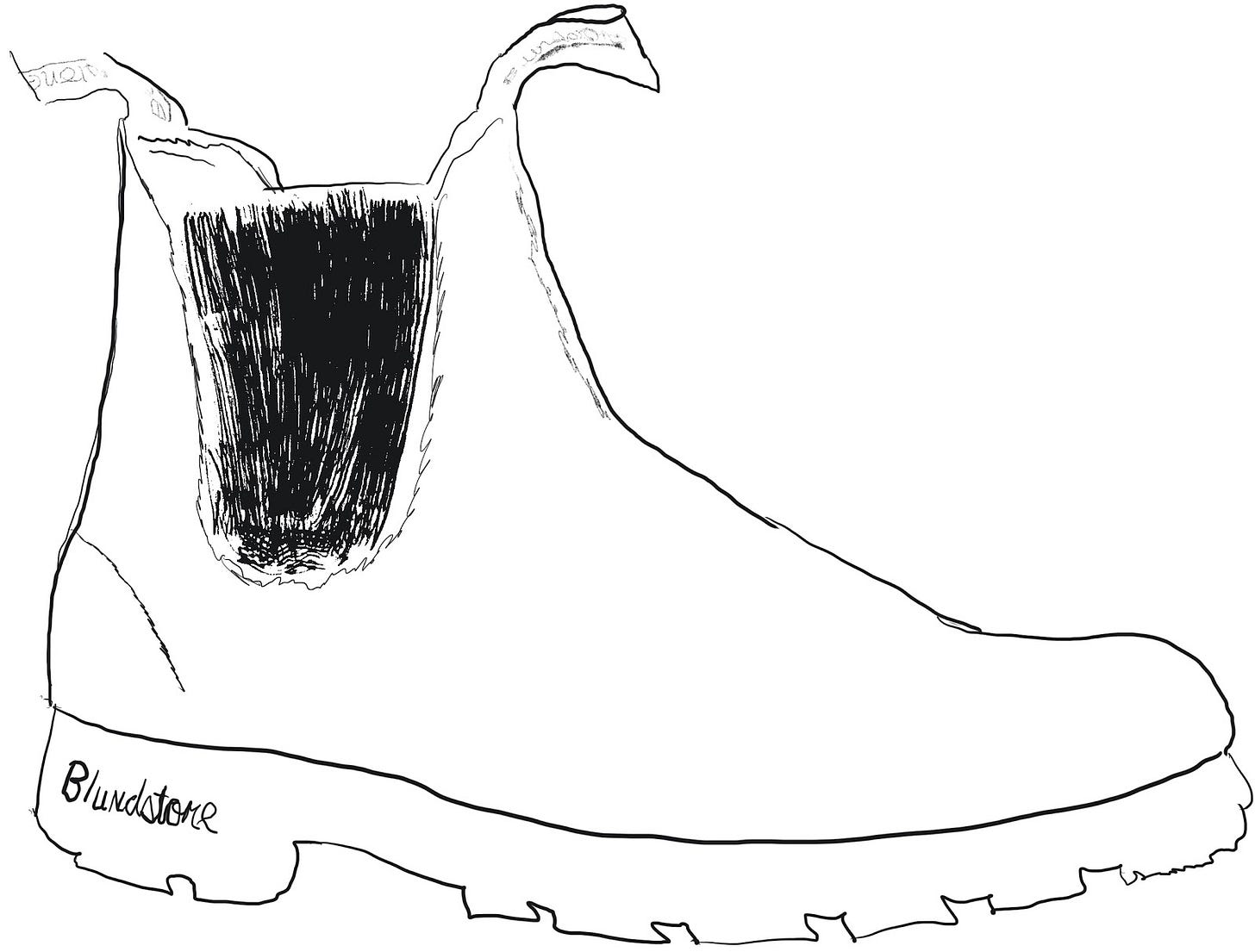

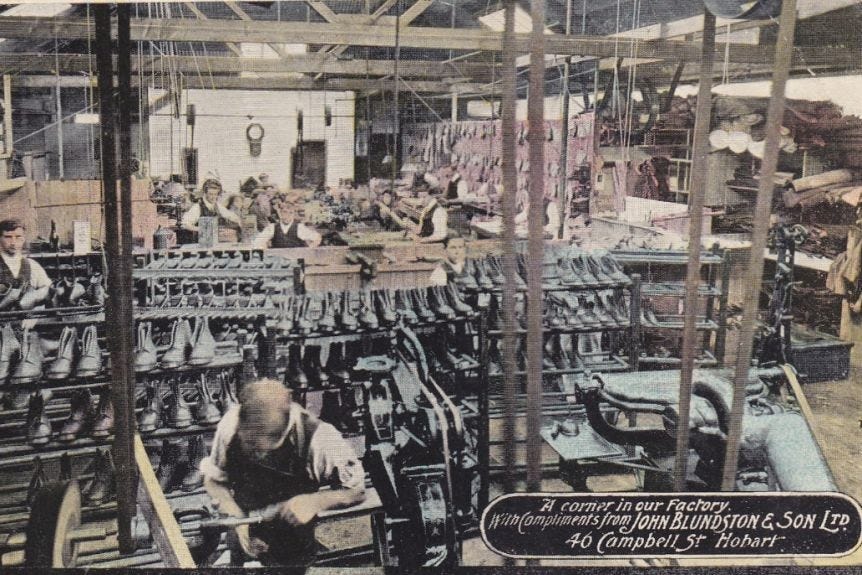
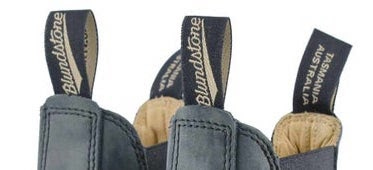
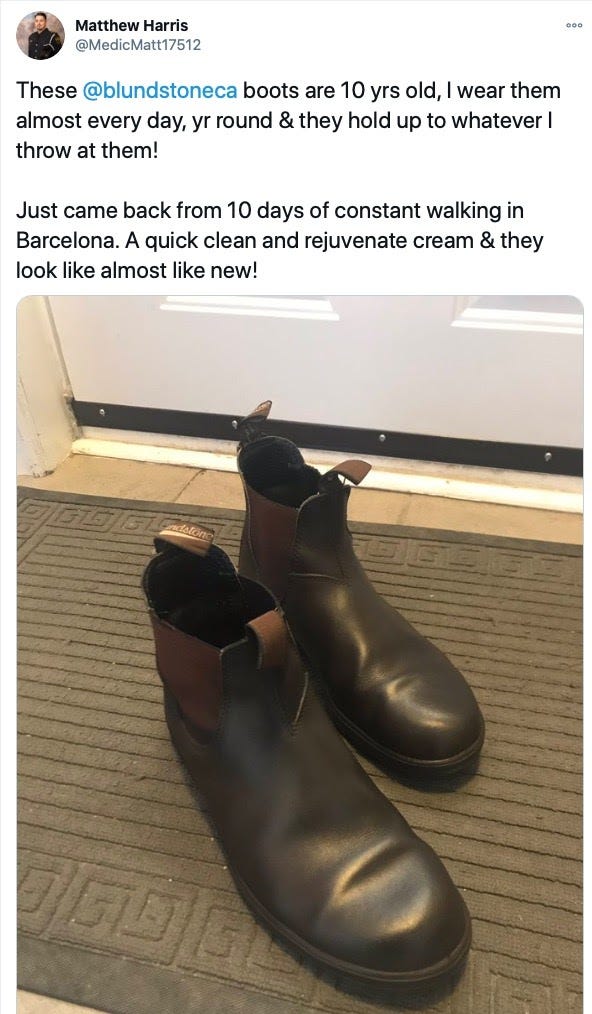
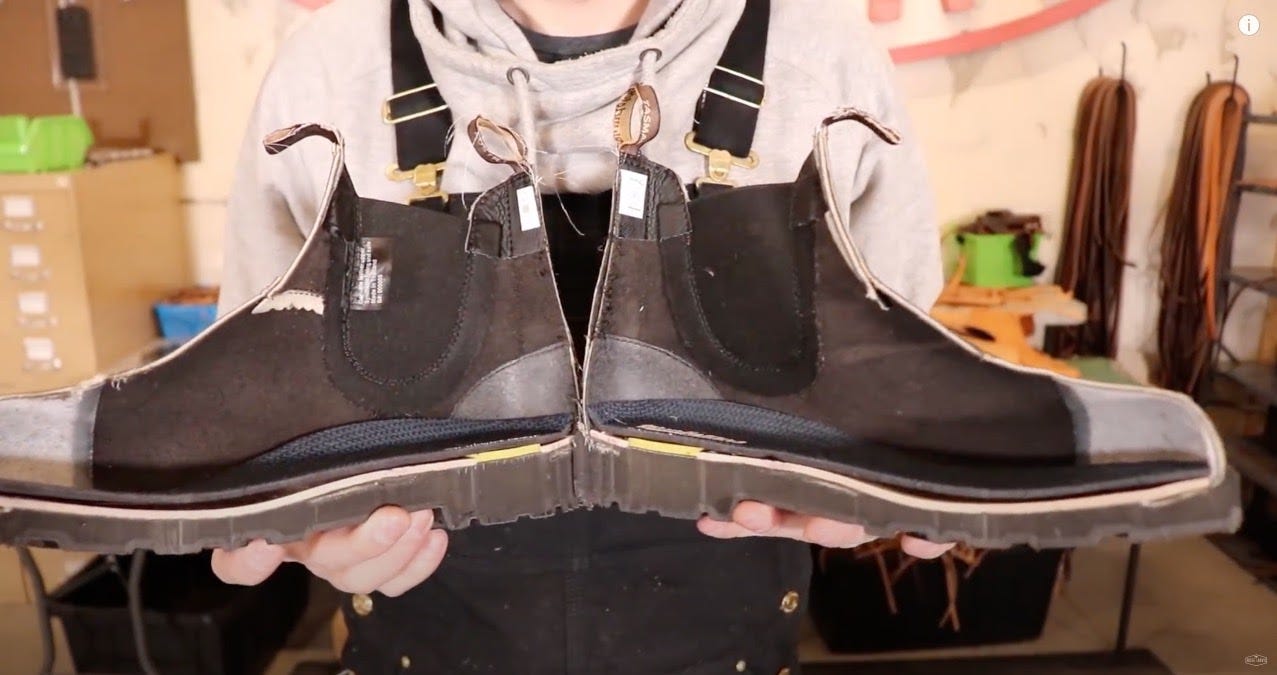
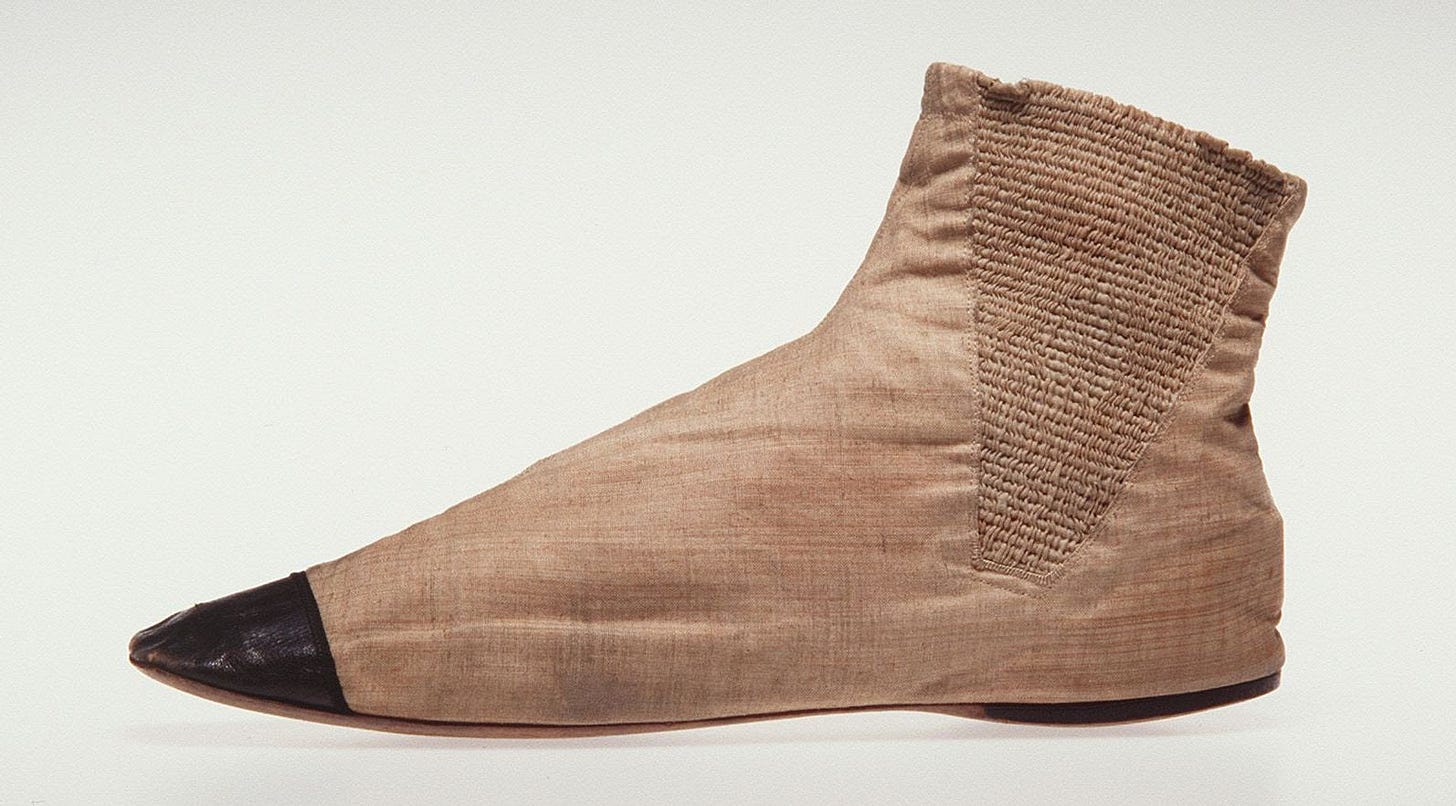
My well-loved eight year old Blundstones have taken me through summers in Toronto to freezing winters in Iceland, all in comfort. I wouldn’t give up the enjoyment of wearing them for any fancier or more expensive models anywhere! Thank you for the article!